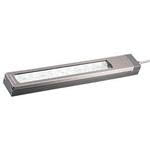
Light-emitting diode (LED) has become an increasingly popular lighting technology. It’s used in both commercial and consumer lighting applications. Unlike incandescent lighting, LED lighting doesn’t feature a wire filament. LED is a type of electroluminescent lighting that generates light in response to a voltage. As electricity flows through an LED light, it will illuminate. Here are some of the top benefits of LED lighting that you need to know.
Low Heat
LED lighting produces very little heat. The same can’t be said for incandescent lighting. During use, electricity will flow through an incandescent light, causing its wire filament to heat up. As the wire filament heats up, it will glow. LED lighting doesn’t have a wire filament. It still relies on electricity to illuminate, but LED lighting produces very little heat.
Energy Efficient
You can rest assured knowing that LED lighting is energy efficient. According to the U.S. Department of Energy (DOE), a typical LED light is about 90% more energy efficient than an incandescent light. Many consumers, as well as business owners, choose LED lighting specifically for its energy-efficient properties. It costs less to operate than incandescent lighting, and it’s better for the environment thanks to its superior energy efficiency.
Long-Lasting
LED lighting also lasts a long time. The same DOE article cited above indicates that LED lighting lasts for up to 25 times longer than incandescent lighting. If you’re tired of constantly replacing light bulbs, you may want to switch to LED. When combined with its energy-efficient properties, LED lighting can save you a substantial amount of money compared to other types of lighting.
Operates in Cold Temperatures
You can use LED lighting in cold temperatures. Cold temperatures may interfere with other types of lighting, but it’s not an issue for LED. This is because LED lighting produces little or no heat. With other types of lighting, the hot filament will be exposed to the cold atmosphere, which can cause bulbs to crack or shatter.
No Toxic Vapors
Another benefit of LED lighting is the simple fact that it doesn’t contain any toxic vapors. There are other lighting technologies besides LED and incandescent. High-intensity discharge (HID), for instance, is an alternative lighting technology. But one of the drawbacks of HID lighting is toxic vapors. It contains pressurized mercury gas. If you accidentally drop or otherwise break an HID light, this mercury gas will be released into the surrounding atmosphere. LED lights don’t contain mercury gas or any other toxic vapors.



